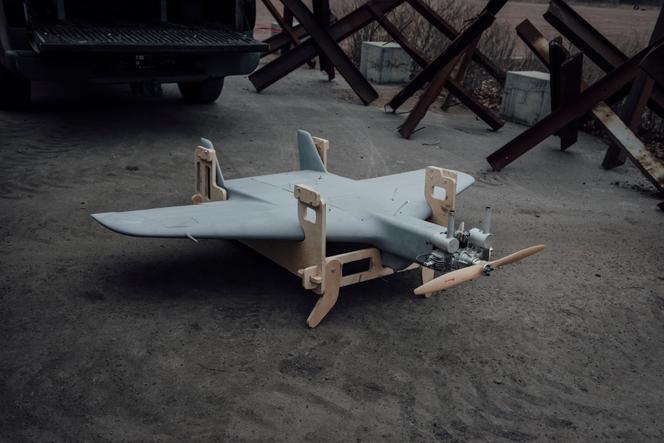


Amid gray skies and freezing temperatures, an unmarked black pickup pulled up alongside a sports field on the outskirts of Kyiv. "Detective" – his Ukrainian nom de guerre – lifted the tarpaulin at the rear of the vehicle and extracted a small, streamlined, sky-colored aircraft. With a wingspan of just two by two meters, it was light as a feather thanks to the composite materials it's made from, a minimalist engine and a wooden propeller. It may look like a pretty model, but this drone, christened "Rubaka," has become a key weapon for Kyiv.
Able to fly up to 500 kilometers, this kamikaze device can reach military targets in Russia, far behind the front line. And the explosive charge does not exceed 10 kg. "But if you send 10 of them simultaneously, it can cause major damage," said "Detective," one of the Rubaka's developers who belongs to the Ukrainian military intelligence unit – the GUR – that handles these kamikaze drones.
The Rubaka is only the smallest of these. Much larger models, such as the Morok (3 m x 2.5 m) and the Liutyi (4 m x 7 m), can fly much farther – up to 1,000 kilometers for the former, and well beyond that for the latter, bringing Moscow within striking distance of Kyiv. Other models, with even greater range, are under development, in parallel with an increase in production rates.
You have 80.88% of this article left to read. The rest is for subscribers only.
